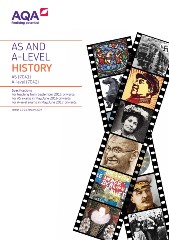2D Religious conflict and the Church in England, c1529–c1570
This option provides for the study in depth of a period of major change in the English Church and government, focusing on issues which led England to break with Rome and the problems surrounding the establishment of a new Anglican Church and faith. It explores concepts such as piety, humanism, Protestantism, Catholicism, authority and conformity and promotes an in-depth understanding of the relationship between Church and state, monarch and parliament, faith and pragmatism.
Part one: the break from Rome, c1529–1547
The Church in c1529
- The political and social role of the Church: churchmen as royal advisers; church teachings on monarchical authority; wealth; church courts; monasteries and parish churches
- Popular piety and the Church’s spiritual role: lay religious guilds; key beliefs such as purgatory; the role of the priesthood; the importance of printing
- Early Reformers and Humanists: the legacy of the Lollards and impact on religious belief and practice; Humanism in England as represented by Erasmus, More and Colet
- Abuses and criticisms of the Church: the extent and impact of simony, nepotism and absenteeism; anti-clericalism
The break from Rome, c1529–1536
- The King’s ‘Great Matter’; Henry VIII, his religious beliefs and concern over the succession; the position and roles of Catherine of Aragon and her national and international supporters; the roles of Wolsey, Anne Boleyn and her supporters
- The Reformation Parliament: MPs and expression of grievances; pressures on the Papacy; legislation leading to the establishment of Royal Supremacy
- The influence of faction: Cromwell and the management of Parliament; the supporters and opponents of change and the King’s responses; the Aragonese faction; More and Fisher; Elizabeth Barton and the Carthusian monks
- The doctrinal and political position of the Reformation by 1536: the degree of change and continuity in faith, belief and organisation of the Church
Change and reaction, 1536–1547
- The reformist and conservative factions: aims, influence and the reaction of the King; the impact of foreign affairs on changes to the Church
- The Dissolution of the Monasteries: political, religious, social and economic causes and consequences; the Pilgrimage of Grace
- Change and continuity in doctrine: liturgy, the eucharist and the Bible; doctrinal disputes as reflected in the Ten Articles and the Bishops’ Book; the King’s Book and the Six Articles
- The state of the Church and belief by 1547: disagreements over doctrine and practice; relations with France and Scotland and their impact; the growing influence of the Seymour faction and Cranmer; the importance of the succession
Part two: the establishment of the Church of England, 1547–c1570 (A-level only)
A more Protestant Nation, 1547–1553 (A-level only)
- The Protestant Party and the King: the aims, beliefs and role of Somerset and the overturning of Henry’s will; the aims, beliefs and role of Northumberland as Protector
- The development of doctrine and further reform; two Prayer Books; the role and beliefs of Cranmer; the dissolution of the chantries and other vestiges of Catholicism
- Opposition and conformity: the Western Rebellion; Kett’s Rebellion; the influence of reformers and acceptance of religious changes; the Church by 1553
- The crisis over the succession 1553: attempts to avoid the succession of Mary; the fall of Northumberland and Mary’s accession
The restoration of Papal Authority, 1553–1558 (A-level only)
- Mary’s accession, aims and opposition: the Royal Supremacy and problems with her first Parliament; the issue of the Spanish Marriage; obstacles to the restoration of the Catholic Church
- The restoration of Papal Authority: the second Parliament and the restoration of Papal Authority and Catholic doctrine; Mary as a reformer; the limits of the restoration
- Persecution and reform: reasons for, extent of and repercussions of the persecution of Protestants; Mary, Pole and the attempt to reform Catholicism
- Opposition and conformity: Wyatt and other opposition to changes; support for the changes and the extent of conformity; the war with France and the loss of Calais
The establishment of the Church of England, 1558–c1570 (A-level only)
- Religious divisions on Elizabeth’s accession: Catholics; Protestant émigrés; divisions within those who supported the restoration of a Protestant Church; peace with France
- The re-establishment of the Church of England: Elizabeth’s religious beliefs and aims; attempts to reconcile the conflicting groups; the role of Parliament and the passing of the Acts of Supremacy; uniformity and the new Book of Common Prayer
- Supporters and opponents of the Settlement: consolidation of the Settlement through Visitations; the Vestiarian Controversy; the acquiescence of Catholics
- Maintaining the Settlement: the threat posed by Mary Queen of Scots; the re-emergence of a Catholic party and the Rising of the Northern Earls; the end of consensus and the condition of the Settlement by 1570
